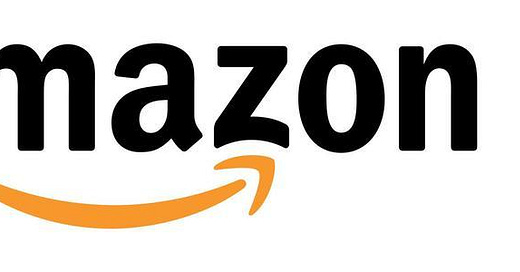Amazon CEO Andy Jassy just got tons of headlines predicting AI is going to reduce his corporate headcount.
It might. But it might not. Jassy’s own uncertainty isn’t mentioned in any of the stories I read.
We know AI boosts productivity. If you’re doing the same amount of work in two years you’re doing today, you’re going to need fewer people doing the work.
But AI also creates new opportunities. It lets you do more things. Jassy’s job is to grow the company, and growth creates jobs.
Fewer staff jobs, more line jobs.
My guess is that Jassy is right about what AI will do to corporate headcount, because it can manage huge databases without human intervention. But he’s wrong about total headcount. That’s because AI’s biggest impact lies in managing delivery and supply. It can do for Amazon what the bar code did for WalMart in the 1980s.
People forget the bar code revolution, but it was the key to WalMart’s rise. Bar codes connected the sales floor to the factory floor. It increased inventory turns, so WalMart could be sold out on a shipment weeks before it paid for it. This meant it could both cut prices and increase profits.
AI can do the same thing while breaking bulk at the warehouse rather than in a store, and on all sorts of goods. AI can let the company run “mini warehouses” close to customers at a profit. I’m already getting same-day delivery on some Amazon goods, which means Amazon can soon deliver perishables as well as non-perishables. That’s where WalMart is beating Amazon now.
Finished Meals
One of the big niches in India right now is 15-minute food delivery. You order your masala dosai, the pick-up is made by an e-bike at the restaurant, or (bigger profits) at a company-owned ghost kitchen, and you’re eating in less time than it took to cook the thing. (My griddle’s not big enough anyway.)
My biggest pleasure in the Netherlands came at grocery stores like Albert Heijn. I could pick up an entire meal, or the ingredients for a meal, in just 10 minutes. The food was fresher than I could ever get from a Kroger. There was more variety. But why weren’t the bicycle delivery guys bringing that to me instead of hanging out at the TikTok Chicken?
Imagine those Indian or Dutch services rolled out here, only attached to an entire department store. Imagine customers with apps that can do what WalMart’s bar codes did a generation ago, letting you know when you’re running out of toilet paper and order it as part of your daily delivery. No more fighting the crowd at Costco for the giant 32 pack.
WalMart became dominant early this century when it was able to use its bar code technology on fresh produce. What if Amazon also did this on pre-made meals, the food arriving at your door faster than you could go get it, and for less than the cost at a Kroger?
That’s a huge opportunity. It’s what Amazon’s store is aiming at, daily deliveries of all the essentials.
But Jassy is wrong. It’s going to mean more working there, not fewer.






It’s going to mean more working there, not fewer. I don't agree but THANKS for writing FEWER. Today we have Harvard grads who say less or always the amount of products. We have an uneducated and lower class population of rich people privileged people.